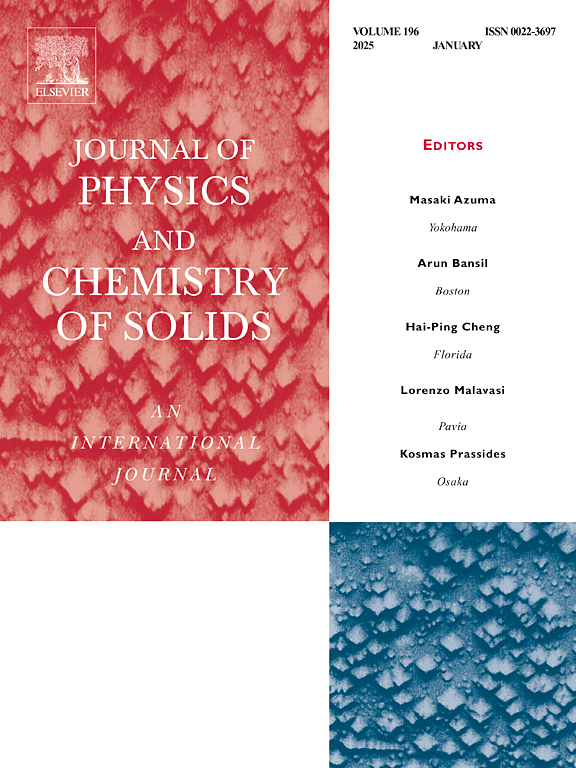在二维BiOBr薄片上加载0D Zn0.5Cd0.5S纳米颗粒以提高可见光下的光催化活性
IF 4.3
3区 材料科学
Q2 CHEMISTRY, MULTIDISCIPLINARY
引用次数: 0
摘要
采用水热法制备了由Zn0.5Cd0.5S纳米颗粒和2D BiOBr片组成的Zn0.5Cd0.5S/BiOBr z型异质结光催化剂(ZCS-BB)。SEM和TEM证实了0D Zn0.5Cd0.5S纳米颗粒成功加载到2D BiOBr薄片上。Zn0.5Cd0.5S的加入增加了BiOBr的表面积和太阳能利用率。此外,电化学分析表明,与单个样品相比,复合材料表现出更高的电荷分离效率和光载流子的重组率。在合成的光催化剂中,5% ZCS- bb对罗丹明B的光催化效率为99%,反应速率常数分别是BiOBr和ZCS的7.3倍和10.7倍。此外,在连续四个周期后,5% ZCS-BB表现出显著的光稳定性和结构完整性。最后,结合XPS分析和捕获实验,揭示了污染物的潜在降解途径。本研究为染料废水的修复提供了一种高效、方便的光催化剂。本文章由计算机程序翻译,如有差异,请以英文原文为准。

Loading 0D Zn0.5Cd0.5S nanoparticle onto 2D BiOBr flakes to boost photocatalytic activity under visible light
The Zn0.5Cd0.5S/BiOBr Z-type heterojunction photocatalyst (ZCS-BB), composed of 0D Zn0.5Cd0.5S nanoparticle and 2D BiOBr flakes, are achieved through a straightforward hydrothermal technology. SEM and TEM confirm the successful loading of 0D Zn0.5Cd0.5S nanoparticles onto the 2D BiOBr flakes. The addition of Zn0.5Cd0.5S leads to an augmentation in both surface area and solar utilization of BiOBr. Additionally, electrochemical analyses demonstrate that the composite exhibit enhanced charge separation efficiency and reduced the recombination rate of photocarriers compared to individual samples. In the synthesized photocatalysts, 5 %ZCS-BB displays exceptional photocatalytic efficacy in decomposing rhodamine B (99 %), with a reaction rate constant approximately 7.3 and 10.7 times greater than that for BiOBr and ZCS. Additionally, following four consecutive cycles, 5 %ZCS-BB exhibits remarkable photostability and structural integrity. Finally, combined with the XPS analysis and capture experiments, a potential degradation pathway of the contamination is disclosed. The current work could offer a highly effective and convenient photocatalyst in the remediation of dye wastewater.
求助全文
通过发布文献求助,成功后即可免费获取论文全文。
去求助
来源期刊
CiteScore
7.80
自引率
2.50%
发文量
605
审稿时长
40 days
期刊介绍:
The Journal of Physics and Chemistry of Solids is a well-established international medium for publication of archival research in condensed matter and materials sciences. Areas of interest broadly include experimental and theoretical research on electronic, magnetic, spectroscopic and structural properties as well as the statistical mechanics and thermodynamics of materials. The focus is on gaining physical and chemical insight into the properties and potential applications of condensed matter systems.
Within the broad scope of the journal, beyond regular contributions, the editors have identified submissions in the following areas of physics and chemistry of solids to be of special current interest to the journal:
Low-dimensional systems
Exotic states of quantum electron matter including topological phases
Energy conversion and storage
Interfaces, nanoparticles and catalysts.

 求助内容:
求助内容: 应助结果提醒方式:
应助结果提醒方式:


